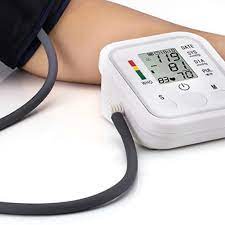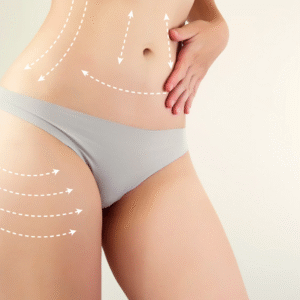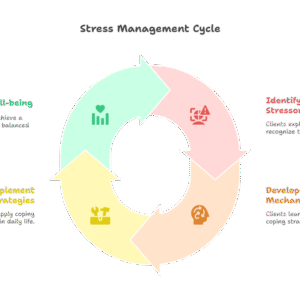Moles are common skin growths that can appear anywhere on the body. While most moles are harmless, many people seek removal for cosmetic reasons or due to changes in size, color, or shape.Whether for aesthetic purposes or peace of mind, many individuals turn to professional procedures such as Mole Removal in Dubai to achieve smooth, blemish-free skin. Understanding the most effective methods for mole removal can help you make an informed decision.
Understanding Moles and Why They’re Removed
Moles, or nevi, are collections of pigment-producing skin cells called melanocytes. They vary in size, shape, and color—ranging from flesh-toned to dark brown or black. Some moles are flat, while others are raised. Most are benign, but monitoring them for changes is important, as unusual features may signal something more serious.
People typically choose to remove moles for reasons such as:
-
Aesthetic concerns
-
Frequent irritation (due to shaving or clothing)
-
Medical evaluation due to suspicious appearance
Comparison of Mole Removal Methods
Here is a comparison of the most commonly used mole removal methods based on effectiveness, scarring, recovery time, and recommended use:
| Method | Effectiveness | Scarring Risk | Recovery Time | Best For |
|---|---|---|---|---|
| Surgical Excision | Very High | Moderate | 1–2 weeks | Large/deep or suspicious moles |
| Shave Excision | High | Low to Moderate | 1 week | Raised moles |
| Laser Removal | Moderate to High | Low | 3–5 days | Small, pigmented moles |
| Cryotherapy | Moderate | Low | 1–2 weeks | Small superficial moles |
| Radiofrequency (RF) | High | Low | Few days | Small to medium raised moles |
| Electrocautery | High | Moderate | 1 week | Non-cancerous raised moles |
Most Effective Mole Removal Techniques
Surgical Excision
How it works: The mole is removed using a scalpel, and stitches are used to close the wound.
Pros:
-
Offers complete removal
-
Suitable for large, deep, or potentially dangerous moles
Shave Excision
How it works: A blade is used to shave off the mole above the skin surface, usually followed by electrocautery.
Pros:
-
Minimally invasive
-
Faster healing than surgical excision
Laser Mole Removal
How it works: A focused laser light breaks down mole pigment in layers until it fades or disappears.
Pros:
-
Minimal damage to surrounding skin
-
Ideal for facial moles
Cryotherapy (Freezing)
How it works: Liquid nitrogen is applied to freeze the mole, destroying the cells.
Pros:
-
Non-invasive
-
Quick in-office procedure
Radiofrequency Ablation
How it works: RF energy vaporizes the mole tissue in layers with minimal skin disruption.
Pros:
-
Little to no scarring
-
Precise and effective for raised moles
Mole Removal Treatment Process (Step-by-Step)
Here’s what you can typically expect during a mole removal treatment:
Initial Consultation
A skin specialist examines the mole and determines whether it’s benign or needs further testing. Based on the assessment, they recommend the best removal method.
Preparation
-
The area is cleaned with antiseptic
-
Local anesthesia is administered to numb the site
Mole Removal
Depending on the technique:
-
A scalpel may be used to excise or shave the mole
-
A laser beam may be applied to break down pigment
-
RF or cryotherapy tools may be used to vaporize or freeze the mole
Post-Procedure Care
-
The wound is cleaned and dressed
-
Healing cream may be prescribed
-
Instructions are given to avoid sun exposure and scratching
Healing and Follow-Up
-
Healing time ranges from 3 days to 2 weeks
-
A follow-up appointment may be scheduled to check for regrowth or review lab results if a biopsy was performed
Can Moles Grow Back After Removal?
Yes, moles can sometimes grow back—especially if the entire mole was not completely removed or if it lies deeper beneath the skin. Surgical excision has the lowest rate of recurrence, while shaving or laser removal may have a slightly higher chance of regrowth.
When Should You See a Doctor About a Mole?
While most moles are harmless, it’s important to seek medical evaluation if a mole:
-
Changes shape, size, or color
-
Starts to itch or bleed
-
Has irregular or blurry edges
-
Develops a mix of colors
FAQ’s:
What is the fastest method to remove a mole?
Laser removal is one of the fastest methods, typically taking under 10 minutes, but may require multiple sessions depending on mole depth.
Does mole removal hurt?
The procedure is usually painless due to local anesthesia. Some mild discomfort or sensitivity may occur after the numbing wears off.
Will I have a scar after mole removal?
There is a chance of scarring with any method, especially surgical excision. However, newer methods like laser and RF are designed to minimize scarring.
Is mole removal permanent?
Most mole removal procedures offer permanent results. However, recurrence is possible if the mole is not completely removed or if it’s genetic.
How do I know if a mole is cancerous?
Cancerous moles often follow the ABCDE rule: Asymmetry, Border irregularity, Color variation, Diameter over 6mm, and Evolving shape/size. If you notice any of these, consult a dermatologist.
Can I remove a mole at home?
Home removal is not recommended. It can lead to scarring, infection, or incomplete removal. Always seek professional care for safe and effective results.
Conclusion
The most effective mole removal method depends on various factors such as mole type, location, and depth. Surgical excision remains the gold standard for complete removal, especially for deeper or suspicious moles. However, for cosmetic purposes, methods like laser treatment, shave excision, and radiofrequency offer effective and less invasive alternatives. Always consult with a certified specialist to determine the most suitable technique for your skin and mole type.







